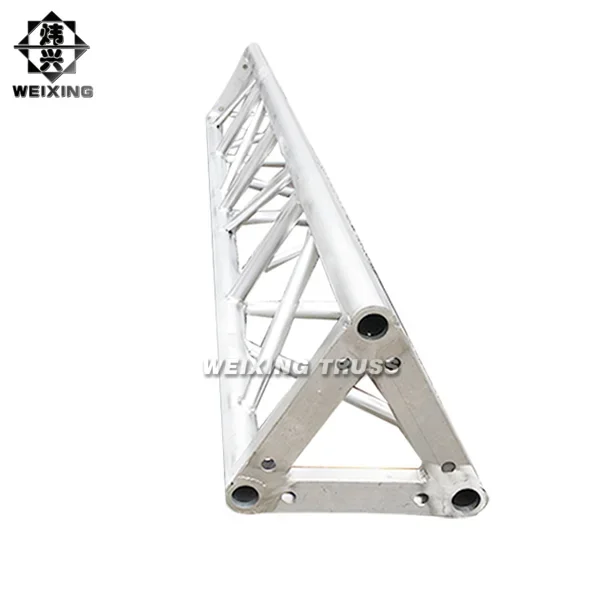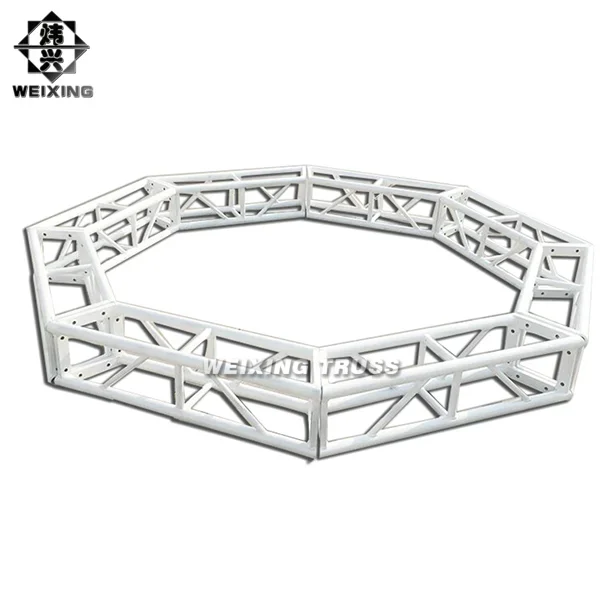When it comes to building structures, stability is of utmost importance. A stable building not only ensures the safety of those who occupy it but also guarantees its longevity. This is where a triangle truss comes in. The use of triangle trusses has become increasingly popular in modern construction because of their ability to enhance the stability and strength of buildings significantly. In this blog post, we will explore what exactly a triangle truss is, how it works, its advantages over other types of trusses, different types available, applications and why you should consider using one for your next building project. So let's dive into the fascinating world of triangle trusses!
What is a Triangle Truss?
A triangle truss is a structural component used in construction to provide support and stability to buildings. As the name suggests, it is designed in the shape of a triangle and consists of three members or beams that are interconnected at their endpoints.
These members can be made from various materials such as wood, steel or aluminum depending on the requirements of the building project. The design of the triangle truss allows for even distribution of weight throughout its structure which helps prevent any undue stress on individual parts.
One important thing to note is that not all triangle trusses have equal angles between each member. This means that care must be taken when selecting an appropriate angle for specific applications based on factors such as load-bearing capacity and wind resistance.
With its unique triangular shape, a triangle truss provides superior strength and stability compared to other types of trusses making it an ideal choice for modern construction projects.
How Does a Triangle Truss Work?
A triangle truss works by distributing weight and force evenly across its structure. Unlike other trusses that rely on a combination of vertical and horizontal members, the triangle truss uses diagonal members to create a stable framework.
The principle behind this design is the fact that triangles are inherently strong shapes. They distribute weight evenly along all sides, making them ideal for supporting large structures like buildings and bridges.
When external forces such as wind or earthquakes act upon a building, the triangle truss helps to transfer these forces through the entire structure. This prevents any one section from bearing too much stress and potentially collapsing.
As an added benefit, using a triangle truss can also help reduce costs when constructing buildings as it requires less material than other types of support structures while still maintaining high levels of stability.
The use of a triangle truss in construction provides greater safety for occupants in buildings and reduces long-term maintenance costs while providing more efficient structural support.

The Advantages of a Triangle Truss
Triangle trusses are an essential structural element in modern construction, particularly when it comes to enhancing the stability and strength of buildings. The triangular shape of a triangle truss is crucial in distributing weight evenly across all sides, which helps prevent any buckling or twisting.
One major advantage of using triangle trusses is that they can support heavy loads while maintaining their shape, thanks to their inherent structural integrity. This means that buildings built with these types of trusses will be more stable overall and less prone to collapse during adverse weather conditions.
Another key benefit of using triangle trusses is cost-efficiency. Since they require fewer materials than other types of trusses, builders can save on expenses without sacrificing quality or safety.
Because triangles are inherently rigid shapes, structures built with them may require fewer supports over long spans than those made with other shapes. This makes them an ideal choice for bridges and other large-scale projects where minimizing weight and maximizing space are essential considerations.
All in all, there's no denying that the advantages offered by triangle trusses make them a top choice for architects and builders alike who want to ensure the stability and durability of their constructions while keeping costs manageable.
Types of Triangle Trusses
Triangle trusses come in different types, each with its unique characteristics and applications. One type is the Pratt truss, which features diagonal members sloping towards the center and vertical members connecting them. This type of truss offers excellent stability and can span long distances.
Another type is the Warren truss, which consists of equilateral triangles formed by diagonal and vertical members. It is ideal for shorter spans but can also be used for longer ones when combined with additional supports.
The Howe truss is another variant that uses a combination of diagonal and vertical timber members to form right-angled triangles. It's commonly used in bridges as well as roofing systems due to its efficient use of materials.
There's the K-truss or king post truss that utilizes a central vertical member called a king post. The king post connects two angled support beams forming two triangular sections on either side. This design provides good strength while using less material than other designs.
Each type of triangle trust has its own advantages depending on intended application needs such as durability, cost-effectiveness or aesthetic desires; understanding these differences helps to choose an appropriate design for your building project.

Applications of Triangle Trusses
Triangle trusses have become a popular choice for architects and builders due to their excellent stability, durability, and aesthetic appeal. They are being used in various construction projects across the globe.
One of the primary applications of triangle trusses is in roofing systems. The triangular shape distributes weight equally throughout the structure, making it perfect for supporting heavy loads such as roofing materials and snow.
Another application of triangle trusses can be seen in bridge engineering. Triangle truss designs provide an efficient way to transfer loads across long spans without buckling or collapsing under pressure. This makes them ideal for use in large bridges that require high-strength support systems.
Apart from these, triangle trusses are widely used in industrial settings like factories and warehouses where large open spaces need to be covered with minimal supports obstructing floor space. Additionally, they are also suitable for designing public structures like sports arenas where visibility is crucial.
There's no doubt that triangle trusses enhance building stability while providing numerous design possibilities. As technology continues advancing in the field of architecture and engineering industry using this type of structural system will undoubtedly continue growing exponentially over time!
Conclusion
To sum up, a triangle truss is an essential component in modern building construction that enhances stability and safety. Its unique design ensures even distribution of weight across the structure, enabling it to withstand external forces such as wind or earthquakes.
The advantages of choosing a triangle truss over other types of trusses cannot be overstated. It offers better load-bearing capabilities, improved structural integrity, and increased durability.
From residential buildings to commercial structures such as bridges and stadiums, the applications of the triangle truss are widespread. Architects and engineers have come to rely on its strength and versatility when designing complex structures with challenging architectural features.
If you're looking for a reliable solution that will ensure your building's stability while enhancing its overall aesthetics, then consider incorporating the triangle truss into your next project. With this technology at your disposal, you can rest assured that your building will stand strong against any environmental forces for years to come.

